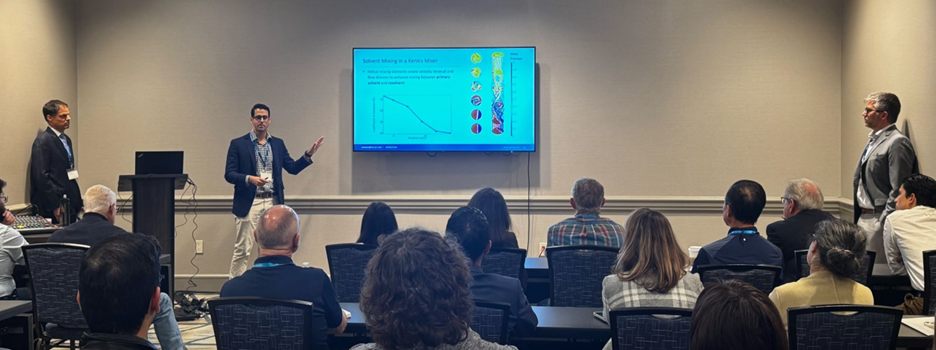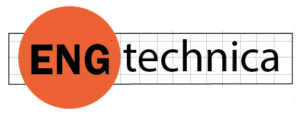
Despite all attempts to popularize it, CAE remains in the domain of specialists. CAD companies, in an effort to expand their business, have acquired CAE companies and tried to simplify analysis so even designers can use it, but beyond the most straightforward stress analysis, CAE is attempted only by a small portion of design engineers and a smaller portion of designers.
Let’s face it: simulation is hard. It’s hard enough when the simulation involves only one discipline but when a simulation spans multiple disciplines, it becomes near impossible. An engineer can get bogged down in unfamiliar theory. With time pressures, they could make wrong assumptions, miss important details, get results that are way off — and never know it.
What is a product engineer, an expert in one discipline but a babe lost in the woods in every other, to do when faced with a challenging analysis that involves multiple disciplines?
They can call in the cavalry.
Cue Veryst
Holding a class at the recently concluded COMOL 2024 Conference in Boston titled “Solving Challenging Multiphysics Problems” is Veryst. This consulting firm has built a business in guiding simulation users out of the fine mesh (literally) they often find themselves when trying to use COMSOL Multiphysics and other simulation programs.
One such challenge presented: a prefilled syringe that clogs.
This would baffle a mechanical engineer finding nothing in the geometry of the syringe to cause such behavior. But Joseph Barakat, PhD, a chemical engineer at Veryst, notices that the needle clogged only when the plunger was pressed quickly. The cause: particles in the fluid that can’t get out of their own way, and get stuck. That happens with a non-Newtonian fluid, he says.
I flashback to Bird’s custard powder, always in the cupboard of our London house when I was young, and the mysterious way it resisted the spoon at times. It was not explained by a mechanical engineering education, in which fluids were always fluid — not somehow turning solid.
Barakat is on the verge of stealing the show. A PhD in chemical engineering from Stanford, sealed with a dissertation on “Microhydrodynamics of Vesicles in Channel Flows,” Barakat is nevertheless exceedingly polite and personable. Rheology is his specialty, and he is able to explain the intricacies of it in a way the typical (non-chemical) engineer can understand.
“It’s the same phenomenon you encounter with corn starch,” he says of the clogged syringe problem.
After the class, I sought out Veryst to thank them for solving a childhood mystery. There’s Barakat humbly pointing out that such knowledge is standard to his discipline. He has respect for all engineering disciplines, though he can’t resist sharing a joke about 3 of them with different perspective on fluids.
An aerospace engineer is bragging about designing Mach 10 aircraft.
A mechanical engineer thinks Mach 1 is plenty
A chemical engineer says “What’s Mach?”
It turns out these chemical engineers have been having a lot of fun with non-Newtonian fluids. Their favorite demo: filling a bowl with a water/corn starch mix and slapping at it towards the unsuspecting and amusing themselves at their overreaction. Haha, the mix clogs and won’t splash. Haha. That oobleck*. So much fun.
We Meet the Team
I had the pleasure of meeting Matthew Hancock, a partner at Veryst, and every bit a gentleman. Veryst (pronounced VER ist) is a made-up name, he says. We were called something else but that domain was taken.
I’m having a blast learning how analysis can be used to solve problems in multiple fields — in no small part due to a Veryst’s presentation. I came to the conference to learn about COMSOL’s ability to handle multiphysics. I left impressed by Veryst, which has among its staff a profound knowledge of various disciplines and the skills to use COMSOL Multiphysics.
These guys are super impressive. The typical engineer considers themselves smarter than the average Joe with a bachelors in engineering, but Veryst, based in Needham, MA, is packed with PhDs, many of them earned at Eastern elite schools, such as MIT and Harvard.
Six of the posters stem from Veryst’s cadre of engineering expertis. Is the COMSOL conference at risk of becoming a Veryst conference? A branding problem for COMSOL, perhaps, but the quality of posters would not suffer.
AltaSim
Also with a booth and posters was Veryst’s main competitor, AltaSim. AltaSim has fewer posters but a commanding position at the exhibit entryway with a booth stocked with brochures and manned by a director of business development and a VP of sales. Clearly, these guys are good at marketing.
They are no slouches in COMSOL, either. Established in 2002, AltaSim, headquarters outside Columbus, Ohio, claims expertise in COMSOL, completing over 850 projects spanning many of COMSOL’s physics. They will take on the actual simulation, train users in how to do it themselves, or, if the company does a particular analysis over and over again, make the customer an app for it.
_________
*From a Dr. Zeuss book titled Bartholomew and the Oobleck, where a strange green substance falls from the sky. Oobleck is a non-Newtonian fluid, meaning it behaves like both a liquid and a solid depending on the pressure applied to it. It’s made by mixing cornstarch and water, typically in a ratio of about two parts cornstarch to 1 part water. When you apply force to oobleck—like squeezing it or hitting it quickly—it acts like a solid, resisting the pressure. However, if you touch it gently or let it sit, it flows like a liquid. It is a school science experiment every chemical engineer remembers.

